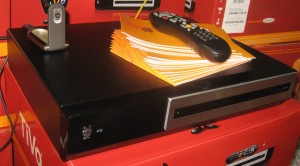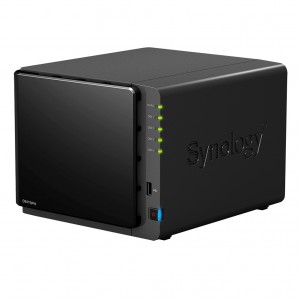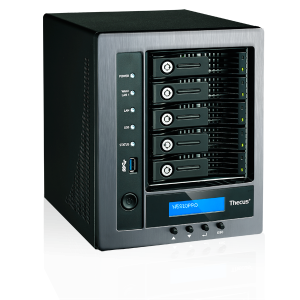Those of us who love particular TV shows are enamoured by the personal-video-recorder. They are a follow-on from the video cassette recorder as a tool for recording these shows for later viewing because they use a hard disk rather than tape to hold these shows.
What is the typical PVR nowadays

The TiVo set-top PVR – what we think of this class of device
When we think of a PVR, we typically think of TiVo or a cable-company-supplied device. These are set-top devices with an integrated hard disk and 2 to 4 TV tuners that are connected to a TV antenna (aerial), a satellite-TV dish or cable-TV infrastructure. With these devices, you pick shows to record from an electronic-programme-guide on the TV screen. with the ability to even search for particular shows. Some models even implement a cloud-based Web page for programming shows, operate a recommendation engine and the devices worth their salt can keep recording each episode of a TV serial.
The NAS as a PVR

Synology DiskStation – one of an increasing number of NAS devices that can become a PVR
A trend that is starting to appear is to equip a network-attached storage server as a PVR, which Synology and a few others are doing as part of their app ecosystem for their NAS devices.
Here, you connect a USB TV-tuner module to the NAS or point it to a broadcast-LAN tuner device of the HDHomeRun ilk to pick up the TV broadcasts. Similarly the NAS could receive streamed or downloaded content from one or more IPTV services without the need for TV-tuner modules. You would typically program the shows using a Web-based interface or mobile / smart-TV app and play these through your TV, computer or mobile device using either DLNA technology or, again, the same mobile / smart-TV app.
These offer a sense of flexibility because you could add on extra tuner devices to “beat the ratings period” where many good shows are being run at once. As well, you have the high-capacity hard disk for recording your shows so there is less of a need to delete shows you have or haven’t watched.
Personally, I would see these devices augmenting a set-top PVR device or work in lieu of one. But there has to be a way to provide a native set-based experience for programming recordings or viewing them, something I would see as being facilitated if UPnP AV 4 which offers remote scheduling, or RVU which offers a “set-based” user interface for other devices is implemented,
Other capabilities that can be opened up include:
- record all prime-time news bulletins from many channels to allow you to examine how different channels treat particular stories
- record “like” shows as part of a recommendation engine, including to record previously-curated “critic’s lists” of TV content or recording all shows with particular attributes without tying up a primary PVR’s tuner and disk resources
Similarly, these devices could work well in this respect when the goal is to serve multiple users who want to view the recorded content on different TVs or mobile devices. It could also allow for the design of “lightweight” set-top PVR devices that send broadcast content to a NAS and play content from that NAS rather than recording to a local hard disk. These would have a solid-state storage of a low capacity along with a single tuner for “slip-viewing” content for example or even use a low-capacity hard disk and a tuner to capture content to be stored on a NAS.
Once the concept is well-executed, a high-capacity multiple-disk network-attached storage device could end up serving as a personal video recorder for a household or business.





